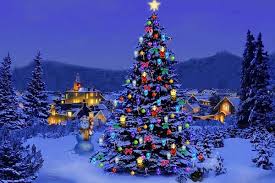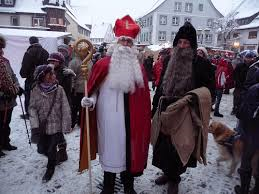- The first printed reference to a Christmas tree was in 1531 in Germany. f
- Approximately 30-35 million real (living) Christmas trees are sold each year in the U.S. b
- Christmas is a contraction of “Christ’s Mass,” which is derived from the Old English Cristes mæsse (first recorded in 1038). The letter “X” in Greek is the first letter of Christ, and “Xmas” has been used as an abbreviation for Christmas since the mid 1500s. c
- In 1962, the first Christmas postage stamp was issued in the United States. f
- In Germany, Heiligabend, or Christmas Eve, is said to be a magical time when the pure in heart can hear animals talking. f
- The Viking god Odin is one precursor to the modern Santa Claus. According to myth, Odin rode his flying horse, Sleipnir (a precursor to Santa’s reindeer), who had eight legs. In the winter, Odin gave out both gifts and punishments, and children would fill their boots or stockings with treats for Sleipnir. d
- The earliest known Christmas tree decorations were apples. At Christmastime, medieval actors would use apples to decorate paradise trees (usually fir trees) during “Paradise Plays,” which were plays depicting Adam and Eve’s creation and fall. d
- Commissioned by Sir Henry Cole (1808-1883), British illustrator John Callcott Horsley (1817-1903) invented the first Christmas card in 1843. f
- According to the United Nations Children’s Fund (UNICEF), there are 2,106 million children under age 18 in the world. If there are on average 2.5 children per household, Santa would have to make 842 million stops on Christmas Eve, traveling 221 million miles. To reach all 842 million stops, Santa would need to travel between houses in 2/10,000 second, which means he would need to accelerate 12.19 million miles (20.5 billion meters) per second on each stop. The force of this acceleration would reduce Santa to “chunky salsa.” g
- Christmas purchases account for 1/6 of all retail sales in the U.S. f
a Allen, Linda. 2000. Decking the Halls: The Folklore and Traditions of Christmas Plants. Minocqua, WI: Willow Creek Press.
b “Christmas Trees and More.” University of Illinois Extension. 2010. Accessed: December 6, 2010.
c Collins, Ace. 2003. Stories Behind the Great Traditions of Christmas. Grand Rapids, MI: Zondervan.
d Grossman, John. 2008. Christmas Curiosities: Odd, Dark, and Forgotten Christmas. New York, NY: Stewart, Tabori & Chang
e Guinness Book of World Records. 2008. New York, NY: Bantam Dell.
f Gulevich, Tanya. 2000. Encyclopedia of Christmas. Detroit, MI: Omnigraphics, Inc.
g Highfield, Roger. 1998. The Physics of Christmas: From the Aerodynamics of Reindeer to the Thermodynamics of Turkey. New York, NY: Little, Brown and Company.
h Liebman, Lisa. 2003. Leaving You: The Cultural Meaning of Suicide. Chicago, IL: Ivan R. Dee Publisher.
i Philips, Tom. “Facebook Break-Up Chart Shows That Christmas Is a Relationship Killer.” Metro.co.uk. November 2, 2010. Accessed: November 15, 2010.








 RSS Feed
RSS Feed

